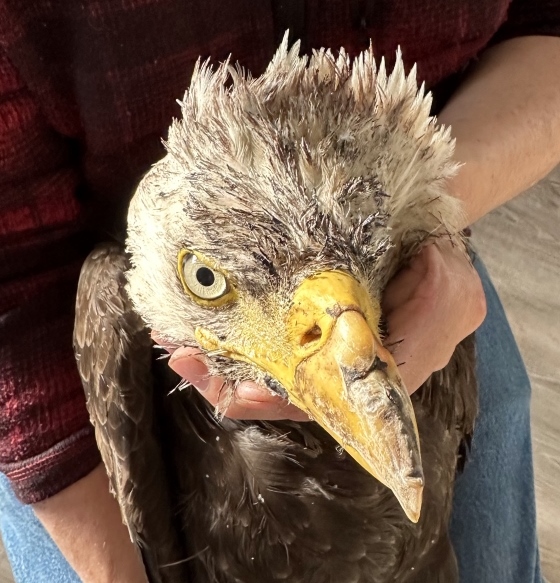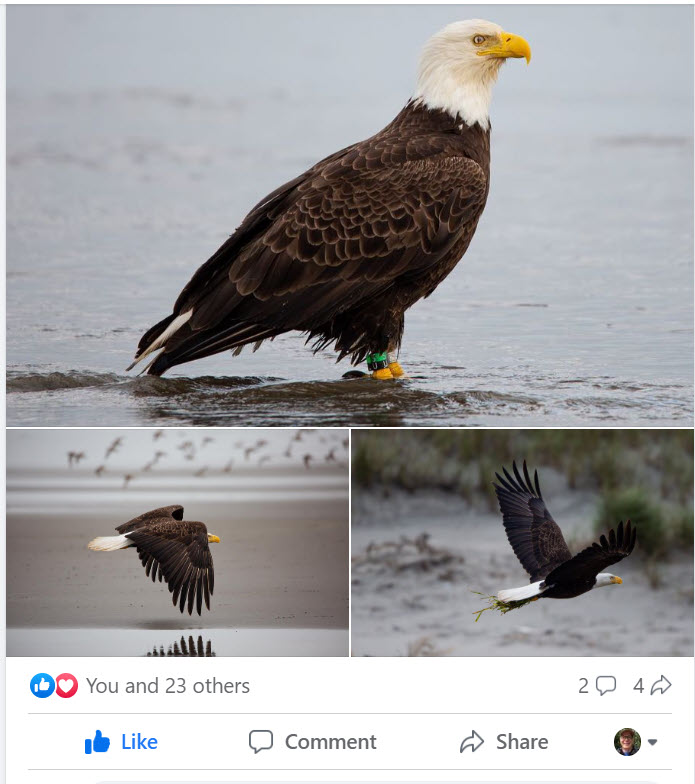

April 29, 2023: Ocean Shores Muncipal Airport
Coastal Raptors began monitoring the health of avian scavengers on the Pacific coast in 2011. This effort involves capturing Bald Eagles, Turkey Vultures and Common Ravens for tissue sampling ahead of lab tests for pathogen and contaminant exposure.
This day we trapped a Bald Eagle with a severe beak injury, clearly evident in the photos above. Our first eagle to find with a significant injury, this capture marked the 27th Bald Eagle that we’d handled.
I assumed the eagle was a male given that, like nearly all raptors, males are smaller than females and, to me, he appeared small. (Note: We didn’t take the time for measurements, which would have determined gender; for more on the process in Bald Eagles, click here).



We captured the eagle at 5:00 PM which, given the injury and time of day, ended all trapping efforts. Most in our group were spending nights at the Polynesian Resort in Ocean Shores. We shuttled him there.
His plumage was unkempt. He was emaciated and dehydrated. Given his condition, Alan and Gill knew from their own experiences with raptor rehab that the first thing we needed to do was give him fluids. They purchased a turkey baster and plastic tubing in town, which they used to get water to his stomach. (It was a Saturday night they had to improvise – the proper veterinary supplies for this operation were unavailable.)


The following day Alan and Gill drove the eagle to the PAWS Wildlife Center in Lynwood, Washington for treatment three hours away. Sadly, given his condition, there was no chance of rehabilitation and release to the wild. Animal care specialists at PAWS made the difficult decision to euthanize.

The following week I emailed PAWS and asked how the beak injury might have occurred. Wildlife Rehabilitation Manager Emily Meredith wrote back, saying We really have no idea but it must have been a significant trauma to cause that much damage to the bone.
While returning this eagle to the wild was a lost cause, the PAWS Wildlife Center has many successes. Check out the Facebook by PAWS Wildlife Naturalist Anthony Denice on National American Eagle Day (June 20).


